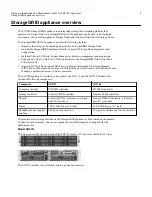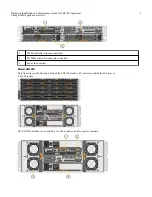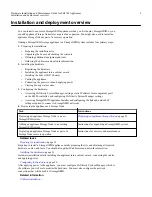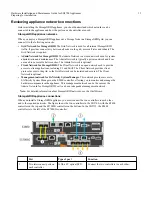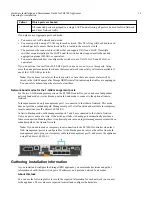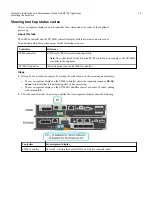
Information needed
Your value
Switch port for port 1
Switch port for port 2 (Active-Backup network bond
mode only)
DHCP-assigned IP address for management port 1, if
available after power on
Note: If the Admin Network includes a DHCP server,
the E5700SG controller displays the DHCP-assigned
IP address on its seven-segment display after it boots
up. You can also determine the DHCP-assigned IP
address by using the MAC address to look up the
assigned IP.
•
IPv4 address (CIDR):
•
Gateway:
Static IP address you plan to use for the appliance
Storage Node on the Admin Network
Note: If your network does not have a gateway, specify
the same static IPv4 address for the gateway.
•
IPv4 address (CIDR):
•
Gateway:
Admin Network subnets (CIDR)
Table 3: Information needed to connect and configure the 10/25-GbE ports on the E5700SG
controller
The four 10/25-GbE ports on the E5700SG controller connect to the StorageGRID Grid Network and Client Network.
Note: See "10/25-GbE port connections for the E5700SG controller" for more information about the options for
these ports.
Information needed
Your value
Link speed
Note: If you select 25 GbE, you must install SPF28
transceivers. Auto-negotiation is not supported, so you
must also configure the ports and the connected
switches for 25GbE.
Choose one:
•
10 GbE (default)
•
25 GbE
Port bond mode
Choose one:
•
Fixed (default)
•
Aggregate
Switch port for port 1 (Client Network)
Switch port for port 2 (Grid Network)
Switch port for port 3 (Client Network)
Switch port for port 4 (Grid Network)
Table 4: Information needed to connect the E5700SG controller to the Grid Network
The Grid Network for StorageGRID is a required network, used for all internal StorageGRID traffic. The appliance
connects to the Grid Network using the 10/25-GbE ports on the E5700SG controller.
Hardware Installation and Maintenance Guide for SG5700 Appliances
18
Preparing for installation

